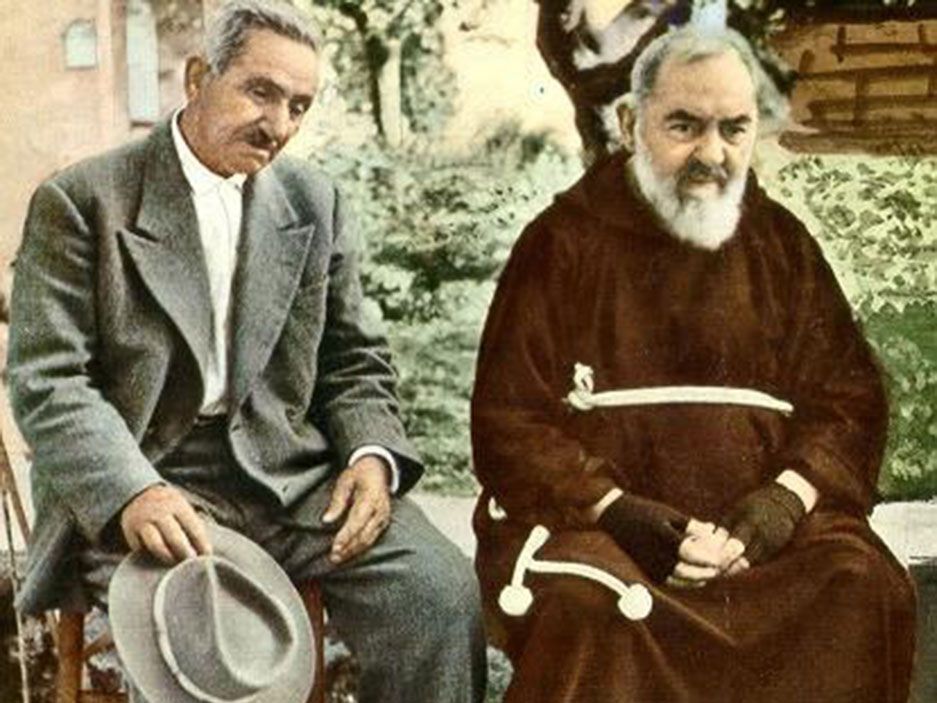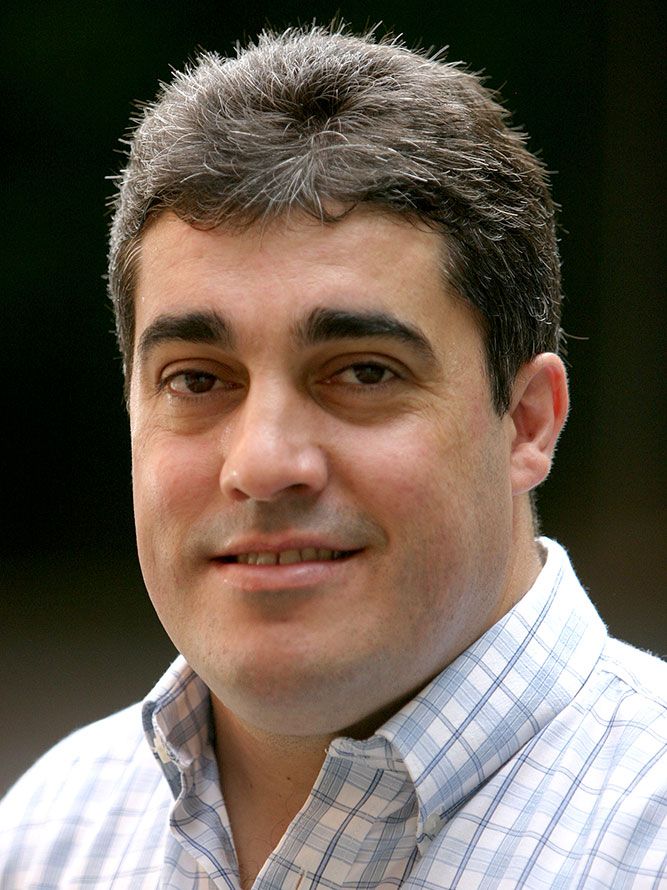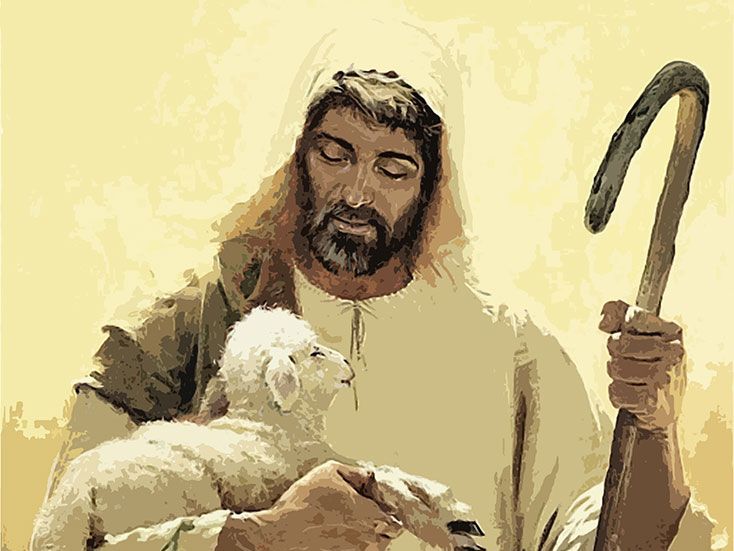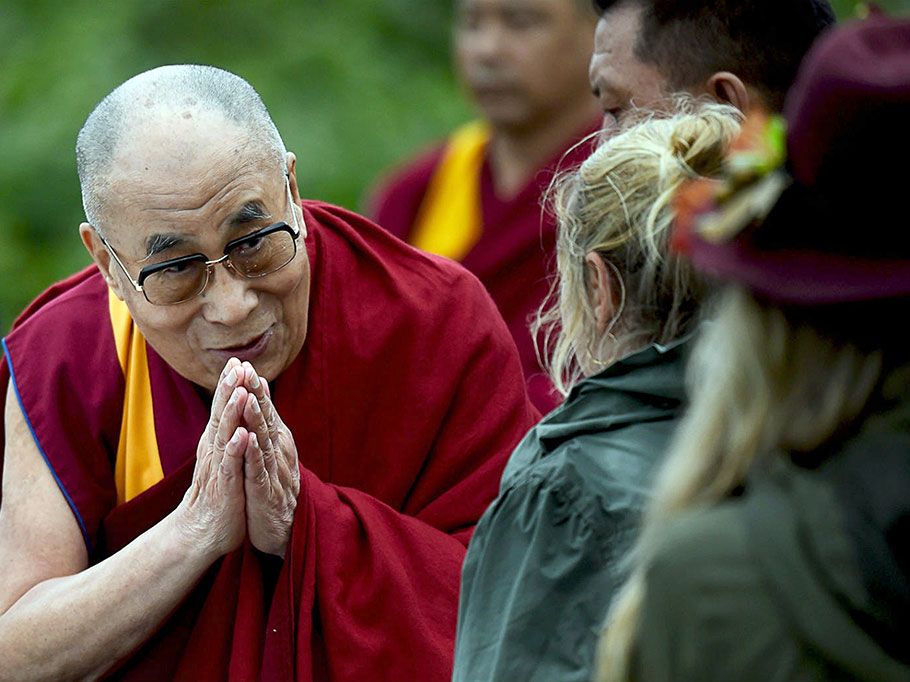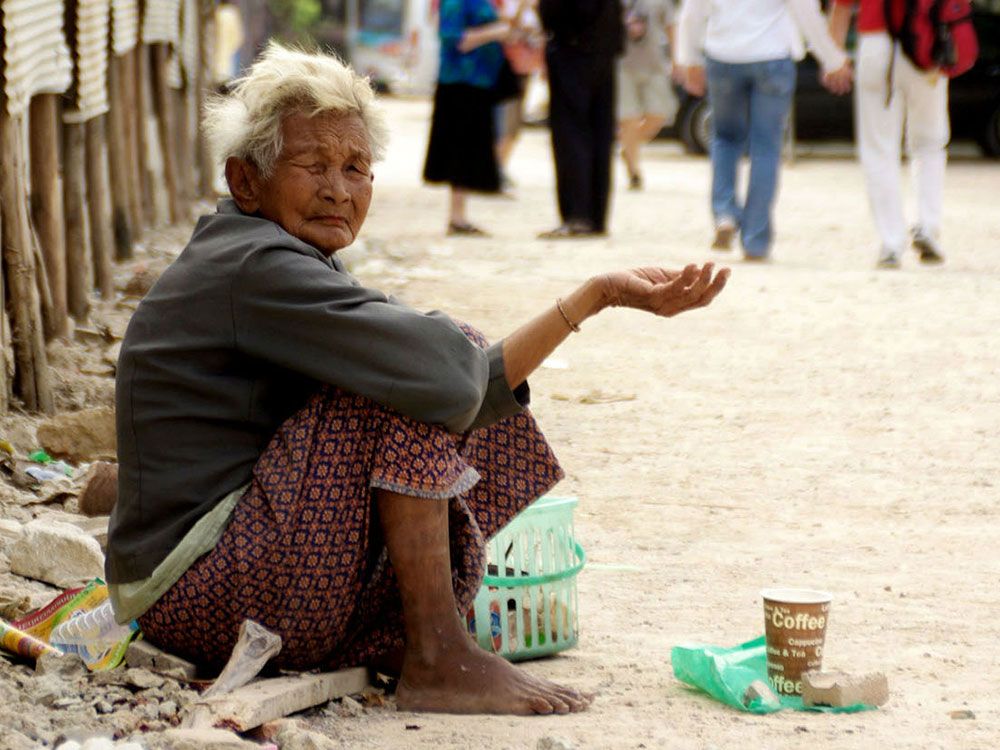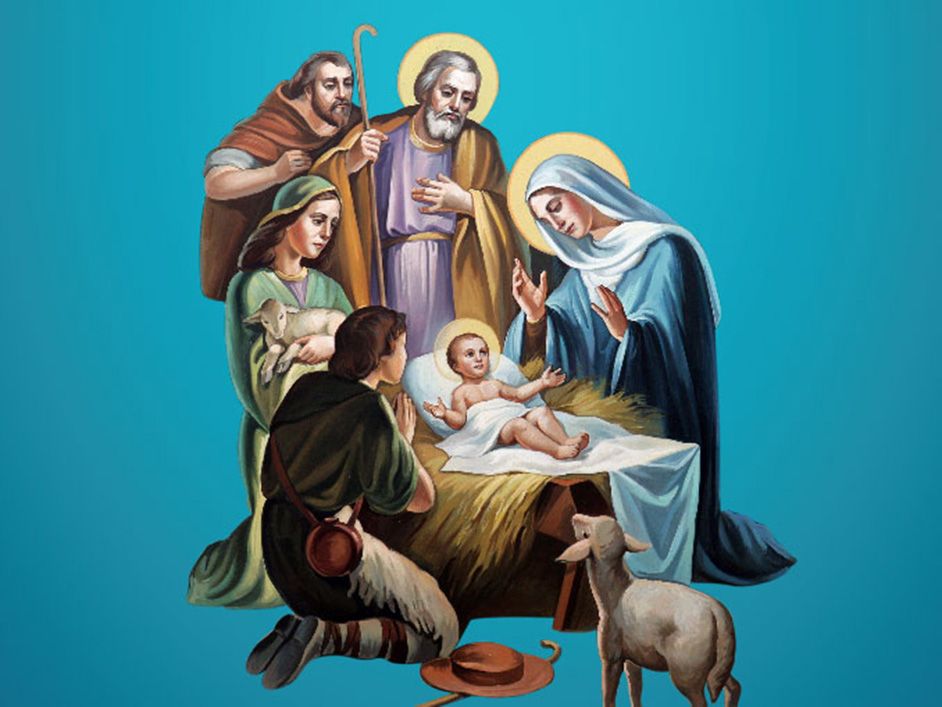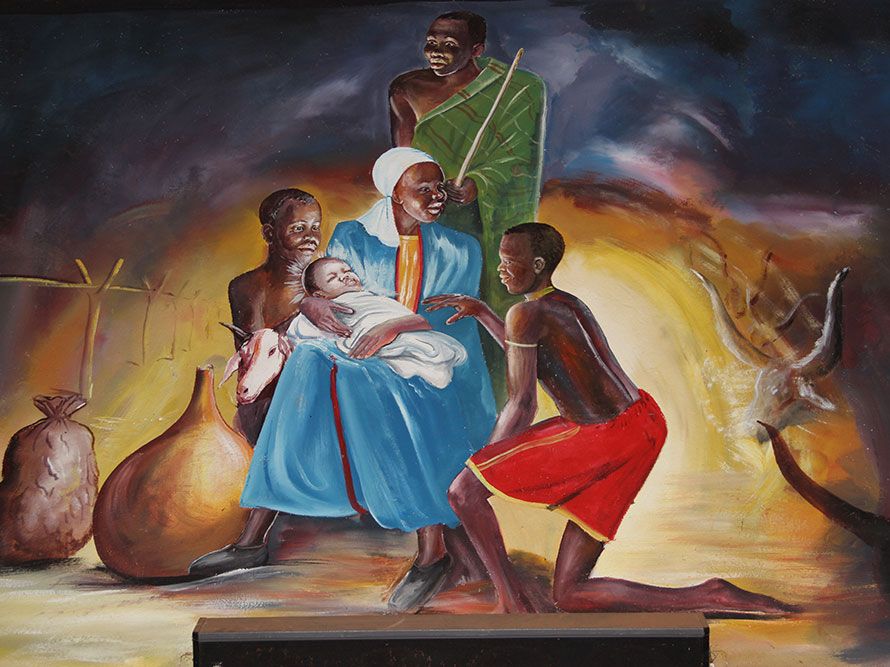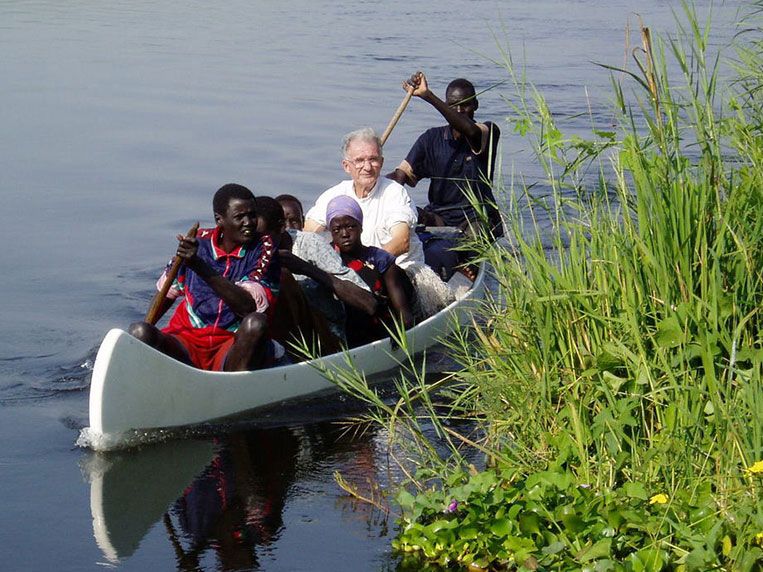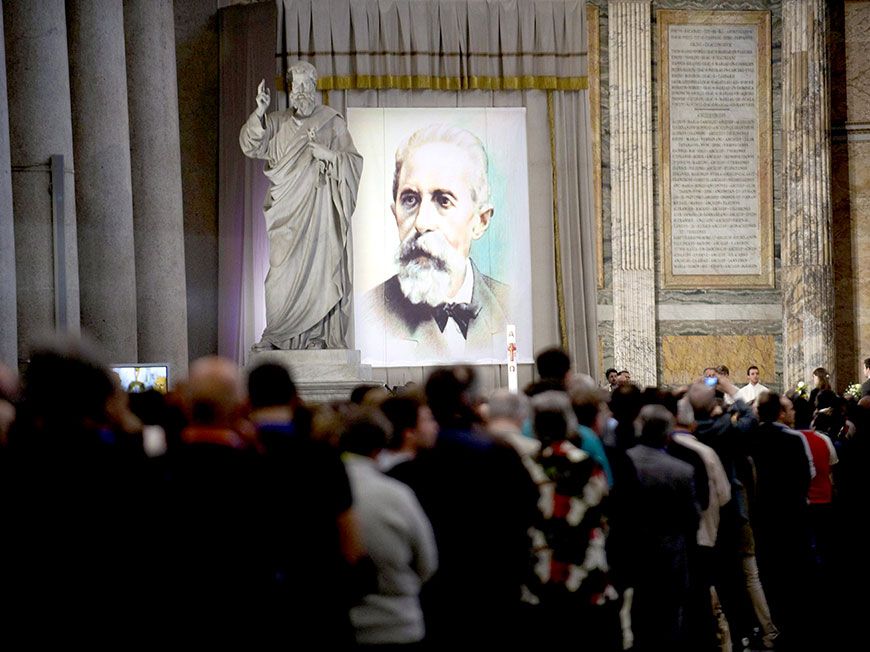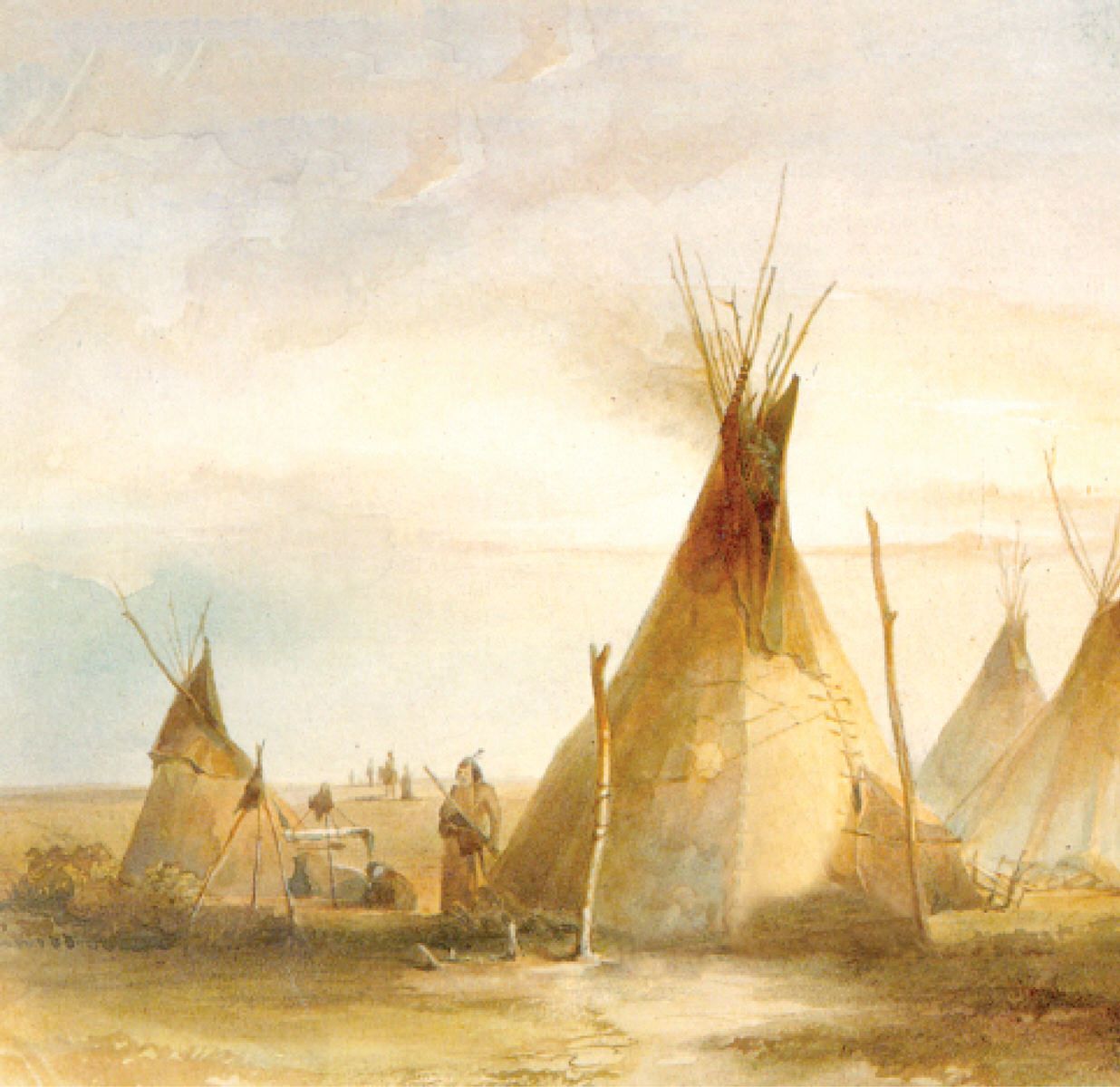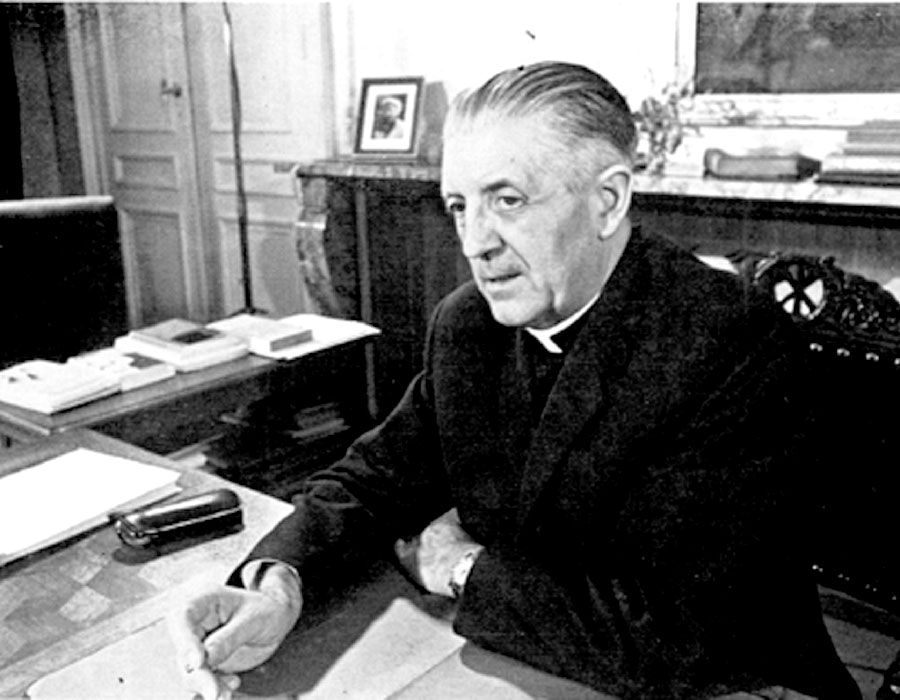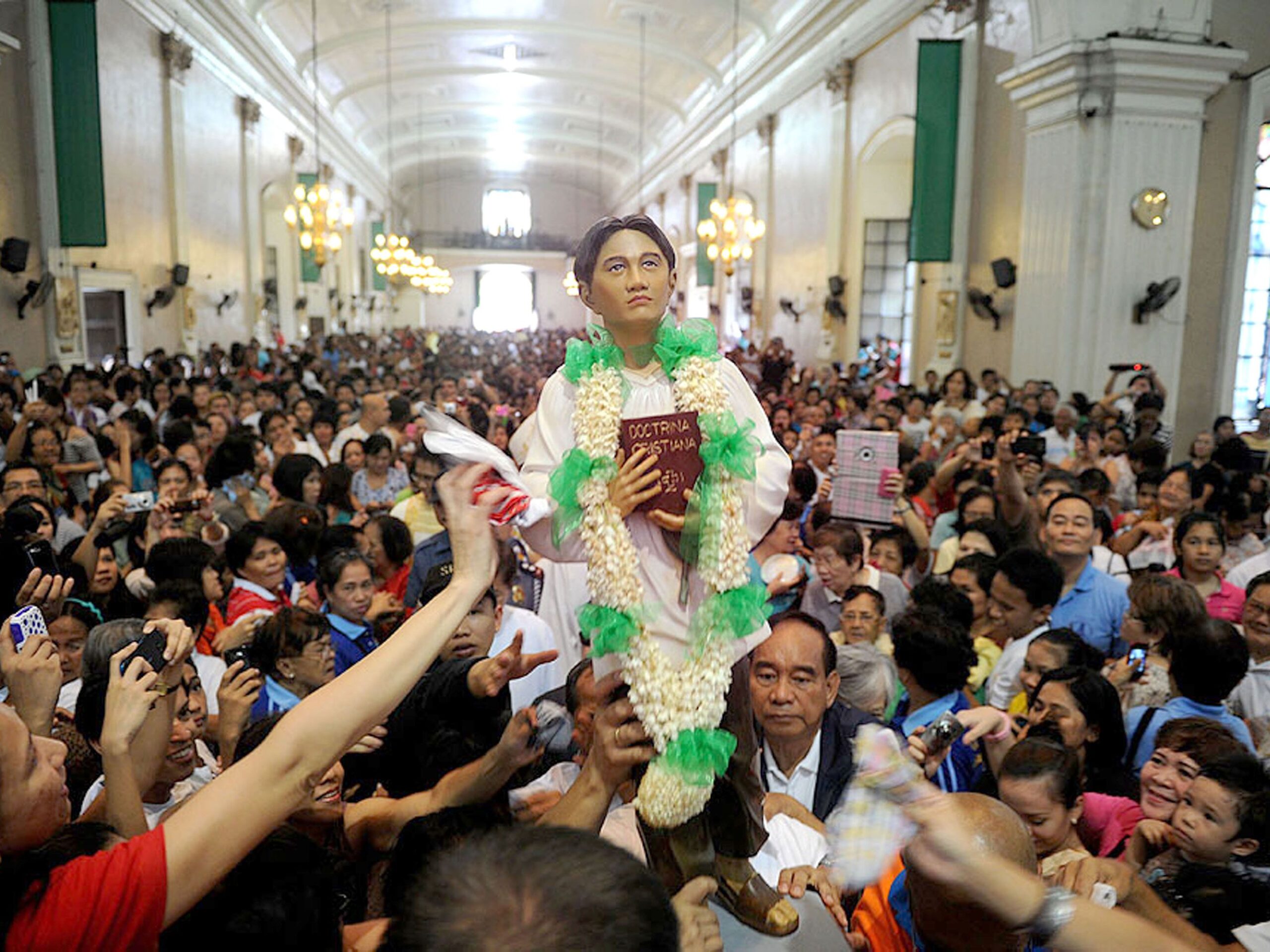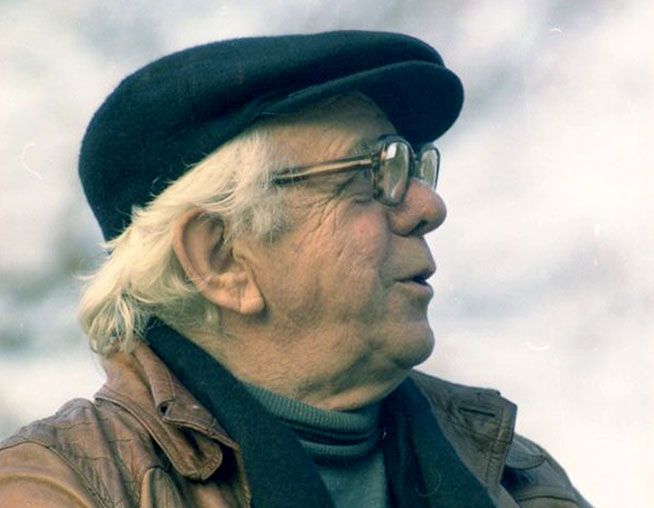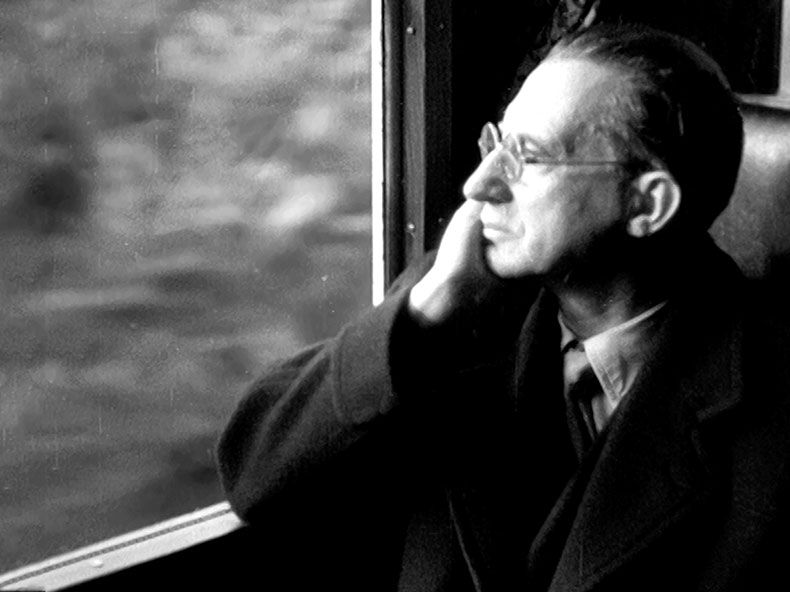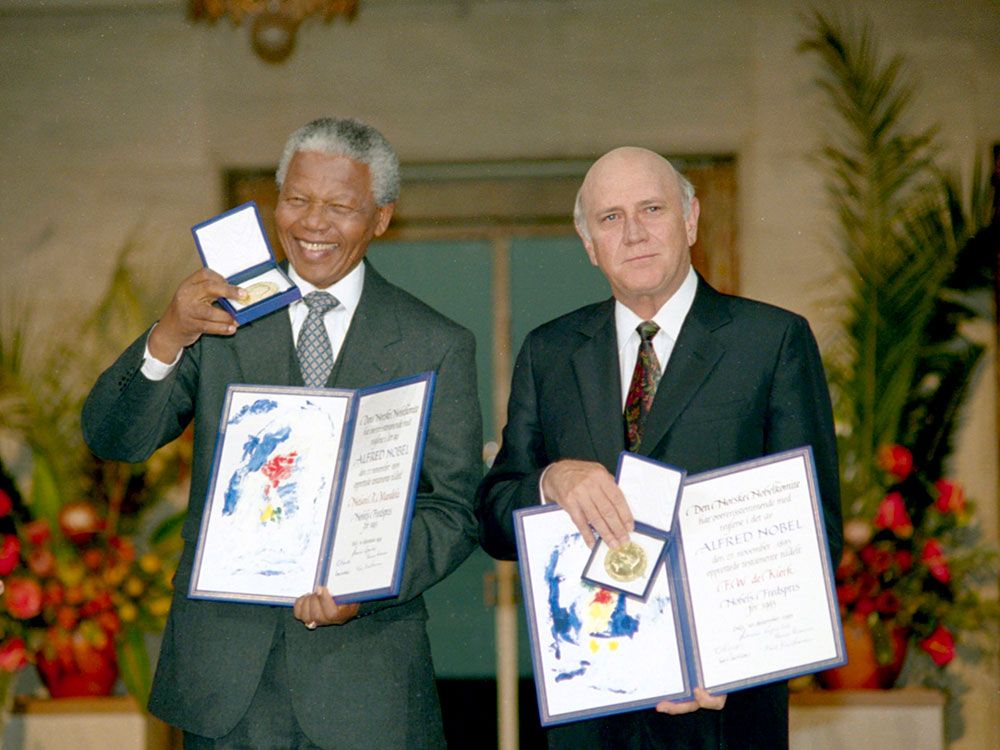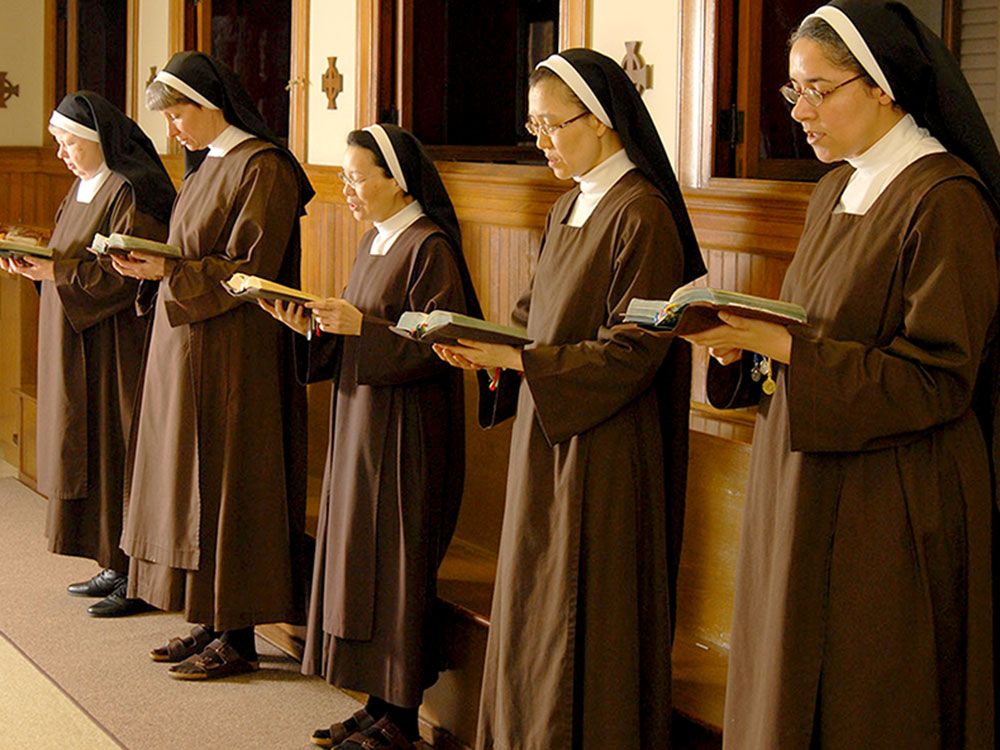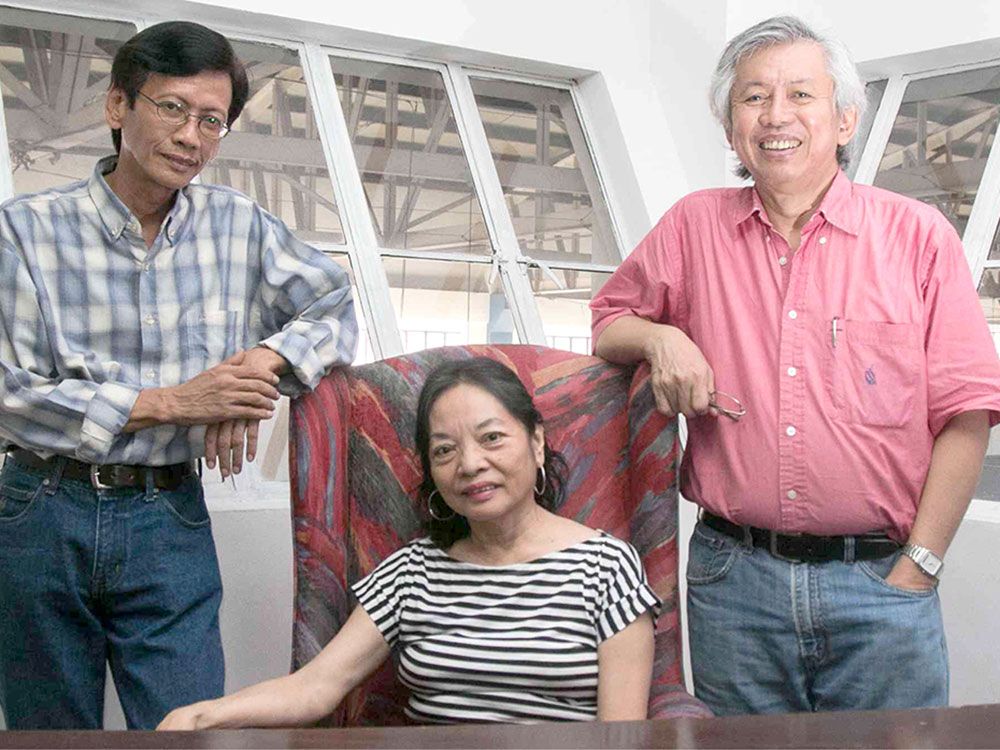An enormous turnout, a special concert and a spectacular late evening fireworks show that lit up the Roman sky were the tributes paid to the Capuchin friar Padre Pio of Pietrelcina following his canonization on June 16, 2002. Some 300,000 pilgrims endured the blistering sun and suffocating temperature that reached 40oC. Volunteers handed out over a million half-liter bottles of water and the Fire Department regularly sprayed water on the sweltering crowd to cool them down.
Twelve giant video screens were strategically placed down Via Conciliazione that runs from St. Peter’s to the Tiber so that the great majority of those who had gathered could get a close-up of the outdoor sanctuary where the canonization was taking place. The event was the climax for the millions around the world who love, venerate and entrust their problems to the intercession of the humble friar of Pietrealcina.
Tens of thousands of others joined in prayer to watch the ceremony on television in the new saint’s hometown of Pietrelcina and in the shrine-hospital he inspired at San Giovanni Rotondo. The latter, where Padre Pio lived most of his life as a Capuchin friar, attracts more than seven million visitors a year, surpassing the Marian Shrine of Lourdes in popularity and second only to the site dedicated to our Lady of Guadalupe in Mexico.
The son of peasant farmers
Francesco Forgione was born to Grazio Mario Forgione and Maria Giuseppa Di Nunzio on May 25, 1887, in Pietrelcina, a farming town in the southern Italian region of Campania. His parents made a living as peasant farmers. Francesco himself worked on the land up to the age of 10, looking after the small flock of sheep the family owned.
Pietrelcina was a town where feast days of saints were celebrated throughout the year, and the Forgione family was deeply religious. They attended daily Mass, prayed the rosary nightly, and abstained from meat three days a week in honor of Our Lady of Mount Carmel. Although Francesco’s parents and grandparents were illiterate, they memorized the Scriptures and narrated Bible stories to their children. His mother said that Francesco was able to see and speak with Jesus, the Virgin Mary, and his guardian angel, and that as a child, he assumed that all people could do so.
In 1897, after he had completed three years at the public school, Francesco was drawn to the life of a friar after listening to a young Capuchin friar who was in the countryside seeking donations. When Francesco expressed his desire to his parents, they made a trip to Morcone, a Franciscan community, 21 km north of Pietrelcina, to find out if their son was eligible to enter the Capuchin Order. The friars there informed them that they were interested in accepting Francesco into their community but he needed more education.
Francesco’s father went to the United States in search of work to pay for private tutoring for his son, so that he might meet the academic requirements to enter the Capuchin Order. On January 6, 1903, at the age of 15, he entered the novitiate of the Capuchin friars at Morcone. On January 22, he took the Franciscan habit and the name of Fra (Friar) Pio, in honor of Pope St. Pius I, whose relic is preserved in the Santa Anna Chapel in Pietrelcina. At the conclusion of his novitiate, he took the vows of poverty, chastity and obedience.
Commencing his seven-year study for the priesthood, Fra Pio traveled to the friary of St. Francis of Assisi by oxcart. It was during this time, together with his physical illness, that inexplicable phenomena began to occur. During prayer, Brother Pio appeared to be in a stupor, as if he were absent. One of Pio’s fellow friars claims to have seen him in ecstasy, levitating above the ground. On January 27, 1907, he still made this solemn profession.
In 1910, Brother Pio was ordained a priest by Archbishop Paolo Schinosi at the Cathedral of Benevento. Four days later, he offered his first Mass at the parish church of Our Lady of the Angels. His health being precarious, he was permitted to remain with his family until 1916 while still retaining the Capuchin habit.
Returning to community life, he moved to Our Lady of Grace Capuchin Friary, located in the Gargano Mountains in San Giovanni Rotondo, in the province of Foggia. He stayed at San Giovanni Rotondo, except for military service, until his death in 1968.
When World War I started, four friars from this community were selected for military service. At that time, Padre Pio was a teacher at the seminary and a spiritual director. On November 15, 1915, he was drafted into the Italian army but, due to poor health, he was declared unfit for military service and discharged. In all, his military service lasted 182 days.
The Stigmata and World War I
World War I continued to rage and, in July 1918, Pope Benedict XV, who had termed the World War “a useless slaughter” and “the suicide of Europe,” appealed to all Christians to pray for an end to the war. On July 27 of the same year, Padre Pio offered himself as a victim for the end of the war. Days passed and between August 5 and August 7, Padre Pio had a vision in which Christ appeared and pierced his side. As a result, Padre Pio had a physical wound in his side. This occurrence is considered as a “transverberation” or piercing of the heart, indicating the union of love with God. He wrote: “From that day on, I have been mortally wounded. I feel in the depths of my soul a wound that is always open and which causes me continual agony.”
On September 20, 1918, the pains of the transverberation ceased and Padre Pio was in profound peace. On that day, as he was engaged in prayer, the wounded Christ appeared again, and Padre Pio received the visible stigmata, the five wounds of Christ. This time, the stigmata were permanent. They stayed visible for the next fifty years of his life. On August 8, the Allies began the Hundred Days Offensive, which led to the armistice with Germany and the end of the war.
The gift of the stigmata made Padre Pio a kind of new Saint Francis of Assisi, only he carried them for fifty years, whereas Saint Francis only for two years. The blood flowing from the stigmata smelled of perfume or flowers, a phenomenon mentioned in stories of the lives of several saints and often referred to as the odor of sanctity.
Though Padre Pio would have preferred to suffer in secret, by early 1919, news about the stigmatic friar began to spread in the secular world. His wounds never became infected. At the time of Padre Pio’s death, his body appeared unwounded, with no sign of stigmata. Padre Pio’s wounds were examined by many people, including physicians. No satisfying human explanation was ever found.
The miracle worker
People, who had started rebuilding their lives after World War I, began to see in Padre Pio a symbol of hope. Those close to him attest that he began to manifest several spiritual gifts, including the gifts of healing, bi-location, levitation, prophecy, miracles, extraordinary abstinence from both sleep and nourishment (one account states that Padre Pio was able to subsist for at least 20 days on only the Eucharist, without any other nourishment), the ability to read hearts, the gift of tongues, and the gift of conversions.
Because of the unusual gifts Padre Pio was claimed to possess, the Holy See instituted investigations of the related accounts. As a consequence, the Vatican, in the beginning, imposed severe sanctions on Padre Pio to reduce publicity about him: it forbade him from saying Mass in public, blessing people, answering letters, showing his stigmata publicly, and communicating with his spiritual director.
From 1921 to 1922, he was prevented from publicly performing his priestly duties, such as hearing confessions and saying Mass. By 1933, the tide began to turn, prohibitions were lifted and Pope Pius XII, who assumed the papacy in 1939, encouraged devotees to visit Padre Pio.
In 1940, Padre Pio began plans to open a hospital in San Giovanni Rotondo to be named “Home to Relieve Suffering.” The hospital opened in 1956. Barbara Ward, a British humanitarian and journalist on assignment in Italy, played a major role in obtaining, for this project, a grant of $325,000 from the United Nations Relief and Rehabilitation Administration (UNRRA).
In 1947, Father Karol Józef Wojtyla, a young Polish priest who was studying in Rome at the Pontifical University of Saint Thomas Aquinas (Angelicum), visited Padre Pio who heard his confession. During this meeting, Padre Pio told him he would one day ascend to “the highest post in the Church.” John Paul II not only became the longest reigning pope of the contemporary times but is now a fellow canonized saint with Padre Pio whom he himself proclaimed Blessed and Saint.
According to oral tradition, Bishop Wojtyla wrote to Padre Pio in 1962 to ask him to pray for Dr. Wanda Poltawska, a friend in Poland who was suffering from cancer. Later, Dr. Poltawska’s cancer was found to be in spontaneous remission. Medical professionals were unable to offer an explanation for the phenomenon. Dr. Wanda was present at Padre Pio’s canonization in Rome.
“Pray, hope and don’t worry”
Franciscan spirituality is characterized by a life of poverty, love of nature, and giving charity to those in need. Franciscan prayer recognizes God’s presence in the wonder of creation. This is seen clearly in St. Francis’ Canticle of the Sun. Franciscan spirituality is focused on walking in Christ’s footsteps, understanding God by doing what Christ asked, experiencing and sharing God. Padre Pio was a model of all this.
As a spiritual director, he had five rules for spiritual growth: weekly confession, daily Communion, spiritual reading, meditation, and examination of conscience. He compared weekly confession to dusting a room weekly, and recommended the performance of meditation and self-examination twice daily: once in the morning, as preparation to face the day, and once again in the evening, as retrospection. His advice on the practical application of theology, he often summed up in his now famous quote: “Pray, Hope and Don’t Worry.” He directed Christians to recognize God in all things and to desire above all things to do the will of God.
During his long life, millions of people, who heard of him, traveled to San Giovanni Rotondo in the south of Italy to meet him and confess to him and ask for help. The novelist Graham Greene kept two photos of Padre Pio in his wallet after attending one of his Masses. He characteristically said: “Padre Pio has introduced a doubt in my disbelief.” My own uncle, Oreste, threatened by bankruptcy and tempted to commit suicide, was advised to go to Padre Pio instead. He drove the length of Italy and lined up for confession. Padre Pio told him as soon as he saw him: “Don’t worry, my son, you will survive the bankruptcy. Don’t do anything to harm your life.” And so it was.
Early in the morning of September 23, 1968, Padre Pio made his last confession and renewed his Franciscan vows. Till the end, he repeated the words “Gesù, Maria” (Jesus, Mary). At around 2:30 a.m., he said: “I see two mothers” (taken to mean his mother and Mary). Then he died in his cell in San Giovanni Rotondo with his last breath whispering, “Maria!” His body was buried on September 26 in a crypt in the Church of Our Lady of Grace. His Requiem Mass was attended by over 100,000 people. He had often said: “After my death, I will do more. My real mission will begin after my death.” He was 81.
The most popular saint
Padre Pio was considered holy even during his lifetime. In 1971, three years after his death, Pope Paul VI said to the superiors of the Capuchin Order about the monk: “Look what fame he had, what a worldwide following gathered around him! But why? Perhaps because he was a philosopher? Because he was wise? Because he had resources at his disposal? Because he said Mass humbly, heard confessions from dawn to dusk and was – it is not easy to say it one who bore the wounds of our Lord. He was a man of prayer and suffering.”
Padre Pio believed that the love of God is inseparable from suffering, and that suffering all things for the sake of God is the way for the soul to reach God. He has become one of the world’s most popular saints. There are more than 3,000 “Padre Pio Prayer Groups” worldwide, with three million members. A 2006 survey by the magazine Famiglia Cristiana found that more Italian Catholics pray to Padre Pio for intercession than to any other figure. By now, this can be applied worldwide.
The remains of Saint Pio will be brought to the Vatican for veneration during the 2015-2016 Extraordinary Jubilee of Mercy. Saint Pio and Saint Leopold Mandic, himself a Capuchin, have been designated as saint-confessors to inspire people to become reconciled to the Church and to God, by the confession of their sins.

